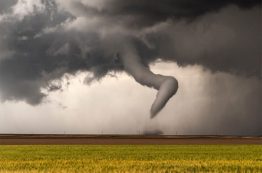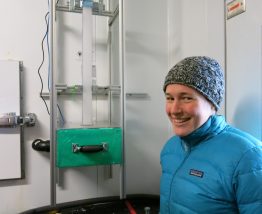In pre-COVID times, a group of students would huddle around a computer practicing their skills to create professional-grade weather graphics like the ones seen on local news channels or practice giving weather reports while standing in front of a green screen in a mini-TV-studio classroom. They are part of The UW DawgCast, a year-long club offered in the Department of Atmospheric Sciences jointly with a broadcast meteorology course that welcomes weather-loving students of all majors to teach them how to read, synthesize, and communicate weather.
Read more »Rating tornado warnings charts a path to improve forecasts
The United States experiences more tornadoes than any other country, with a season that peaks in spring or summer depending on the region. Tornadoes are often deadly, especially in places where buildings can’t withstand high winds. Accurate advanced warnings can save lives. A study from the University of Washington and the National Oceanic and Atmospheric Administration describes a new way to rate and possibly improve tornado warnings.
Read more at UW News »Ask a scientist: Nick Bond
El Niño and La Niña… we hear these two terms a lot when discussing weather but what do they really mean? We asked Washington State Climatologist and weather enthusiast Nick Bond. Keep reading for more El Niño/La Niña questions that didn’t make it into the video (but are just as interesting!). View this post on Instagram A post shared by UW College of the Environment (@uwenvironment) Q: Does El Niño or La Niña really affect our weather?
Read more »What does a hot day in Bali have to do with a dry day in Seattle?
Consider this: the U.S. West Coast has seen a decrease in rainfall between 1981-2018. UW scientists think a phenomenon called the Madden-Julian Oscillation (MJO) might be to blame. A stormy disturbance that occurs several times a year in the tropics, the MJO is similar to the El Nino Southern Oscillation, which is notorious for generating extreme winter weather in the Pacific Northwest.
Read more at Nature »How do we know so much about ancient climates?
Scientists know a lot about the Earth’s climate. Over the past sixty years, they have collected temperature and precipitation information, measured the amount of carbon dioxide in Earth’s atmosphere, and charted the changing weather. But what if we want to compare today’s climate to past climates—say, a million years ago or more? Traces of those past climates—referred to as paleoclimates—remain in rocks and ice as particles that once made up the ancient atmosphere, rain and soil.
Read more »





